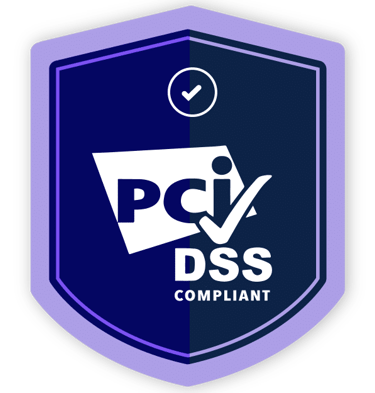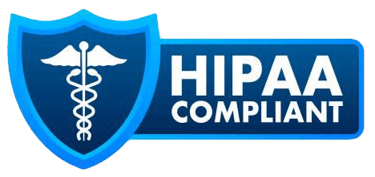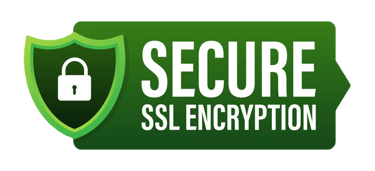Creating an Effective Governing Body Meeting Template for Survey Readiness
Learn how to create an effective governing body meeting template for home health and hospice agencies that ensures compliance, enhances survey readiness, and aligns with Medicare Conditions of Participation (CoPs).
In the ever-evolving landscape of home health and hospice care, maintaining compliance with the Medicare Conditions of Participation (CoPs) is not just a regulatory obligation—it’s a cornerstone of operational excellence. Among the many regulatory expectations, governing body meetings stand out as essential tools for organizational oversight, accountability, and continuous improvement. Creating a well-structured governing body meeting template ensures that your agency can demonstrate regulatory compliance, survey readiness, and a commitment to quality care delivery.
This article provides a comprehensive guide to designing an effective governing body meeting template that aligns with CoPs requirements, supports your Quality Assurance and Performance Improvement (QAPI) initiatives, and streamlines documentation for surveyors.
1. Understanding the Role of the Governing Body
The governing body (also referred to as the Board of Directors or Corporate Leadership Team) bears ultimate responsibility for the direction, oversight, and compliance of the home health or hospice agency. Under the Medicare Conditions of Participation (§484.105 for home health and §418.100 for hospice), the governing body is tasked with ensuring that the agency’s policies, programs, and operations are conducted in accordance with federal, state, and local laws.
Key Responsibilities Include:
Approving and periodically reviewing all agency policies and procedures.
Appointing qualified leadership, such as the Administrator and Director of Patient Care Services (DPCS).
Overseeing the agency’s Quality Assurance and Performance Improvement (QAPI) program.
Ensuring adequate staffing, financial stability, and safe operations.
Reviewing patient outcomes, compliance reports, and internal audits.
Approving corrective action plans based on survey findings or performance indicators.
A well-documented governing body meeting demonstrates proactive leadership involvement and is one of the first documents surveyors review to verify governance accountability.
2. Why a Governing Body Meeting Template Matters
A standardized governing body meeting template serves as a regulatory compliance tool and an internal roadmap for agency governance. It provides a consistent structure for documenting discussions, approvals, and follow-up actions, ensuring nothing is overlooked.
Benefits Include:
Survey readiness: Surveyors expect to see consistent, detailed, and dated documentation of governing body activities.
Continuity: Ensures smooth leadership transitions and historical tracking of decisions.
Compliance assurance: Verifies that your agency meets CoPs requirements related to administrative oversight and performance improvement.
Efficiency: Reduces time spent drafting new documentation for each meeting while maintaining thoroughness.
3. Essential Elements of an Effective Governing Body Meeting Template
A compliant and survey-ready meeting template should be comprehensive, structured, and easily auditable. Below are the core sections your template should include:
1. Header Information
Include agency name, date, time, and meeting location (or virtual meeting link). Identify the type of meeting — regular, special, or emergency session.
Example:
Governing Body Meeting — Q1 2025
Agency: Test Enterprises, Inc. Hospice
Date: March 25, 2025 | Time: 10:00 a.m. | Location: Glendale, CA
2. Attendees and Roles
List all members present, including their titles and roles:
CEO or Administrator
Medical Director
DPCS or DON
RN Case Manager Representative
Social Worker
Chaplain or Spiritual Counselor
Volunteer Coordinator
Quality Assurance Coordinator (if applicable)
This section validates interdisciplinary participation—a key expectation during surveys.
3. Agenda and Discussion Topics
A strong agenda demonstrates governance structure and helps maintain focus. Recommended agenda items include:
Review and approval of previous meeting minutes.
Administrative updates (licensing, staffing, financials).
Clinical performance reports (infection control, falls, medication errors).
QAPI program update and performance indicators.
Emergency preparedness and safety reviews.
Volunteer program and bereavement updates (for hospice).
Policy revisions and program approvals.
Review of survey results or corrective actions.
Setting next meeting date and adjournment.
4. Reports Presented
Attach or summarize key departmental reports. Each report should include measurable data and trends:
Clinical Operations: Patient outcomes, incidents, and infection control data.
Human Resources: Staffing ratios, staff education, turnover rates.
Quality Improvement: QAPI project updates and results.
Emergency Preparedness: Drills conducted, plan updates, coordination with local authorities.
Volunteer Services (Hospice): Hours logged, training completion, cost savings ratio.
Providing evidence-based data supports regulatory compliance under §484.65 (QAPI) and §418.58 (Hospice QAPI).
5. Decisions, Approvals, and Action Items
Surveyors expect to see evidence of active decision-making and follow-up. This section should detail:
Policies approved or revised.
Staff appointments or role changes.
Corrective actions accepted or implemented.
Target deadlines for completion.
Person(s) responsible for follow-up.
Use clear, measurable language:
“The Governing Body approved the updated Infection Control Policy effective March 30, 2025. DPCS will ensure staff re-education is completed by April 15, 2025.”
6. Compliance and QAPI Review
Dedicate a section for reviewing QAPI metrics, findings, and progress. Highlight any negative trends, corrective actions, and ongoing projects.
Example indicators may include:
Patient satisfaction survey results.
Hospital readmission rates.
Timeliness of comprehensive assessments (§484.55).
Staff competency audits.
Incident and infection rates.
Documentation of these reviews proves continuous monitoring of performance as required by CMS.
7. Emergency Preparedness Review
Under Appendix Z and §484.102, agencies must conduct annual reviews of emergency preparedness programs. Use the meeting to document:
Results of drills (e.g., Great ShakeOut participation).
Collaboration with local fire, police, and EMS departments.
Policy updates based on identified gaps.
This reinforces readiness and compliance during emergency preparedness audits.
8. Signatures and Meeting Closure
Conclude with signatures of all attending members (or electronic acknowledgments for virtual meetings). Include:
Date of next scheduled meeting.
Confirmation of meeting adjournment.
Proper sign-off demonstrates active participation and accountability.
4. Best Practices for Survey Readiness
To ensure your governing body meeting documentation passes survey scrutiny:
1. Maintain Consistency
All meetings (quarterly, annual, or special) should follow the same structure and formatting. Surveyors appreciate uniformity—it shows a disciplined governance process.
2. Keep Supporting Documentation
Attach or reference supporting materials such as performance dashboards, QAPI data, infection logs, or policy review forms.
3. Cross-Reference Regulatory Standards
Include notations referencing applicable CoPs (e.g., §484.65 for QAPI, §418.58 for hospice). This subtly demonstrates awareness of compliance requirements.
4. Demonstrate Continuous Improvement
Each meeting should build upon previous discussions, showing that identified issues are addressed and resolved. This “closed loop” process is crucial for passing surveys.
5. Digitize and Archive
Use digital templates and secure storage for version control and retrieval. CMS surveyors often request historical meeting records from prior years.
5. Common Survey Findings Related to Governing Body Meetings
Agencies often receive survey citations due to:
Missing documentation of meeting frequency.
Lack of evidence that policies and programs were reviewed and approved by the governing body.
Absence of QAPI or emergency preparedness discussions.
Failure to document corrective action follow-ups.
Missing signatures or attendance records.
By using a comprehensive meeting template, agencies can avoid these pitfalls and demonstrate proactive governance.
6. Example: Quarterly Governing Body Review Summary
Quarter: Q2 2025
Date: June 24, 2025
Focus Areas: QAPI progress, infection control, patient satisfaction
Findings:
Patient satisfaction improved from 85% to 88%.
Infection control policy updated; staff retraining complete.
One corrective action pending regarding documentation timeliness.
Decisions:
Approved the new Bereavement Program training manual.
Directed QAPI Coordinator to report improvement metrics in next meeting.
Next Meeting: September 23, 2025
7. How HealthBridge Can Help
At HealthBridge, we specialize in helping home health and hospice agencies achieve full compliance with Medicare Conditions of Participation through structured governance support. Our team develops customized governing body meeting templates, conducts mock surveys, and provides QAPI program guidance to ensure your documentation and operations withstand the most rigorous regulatory reviews.
HealthBridge Consulting’s expertise ensures your agency remains survey-ready year-round, with compliance systems designed to prevent deficiencies and foster a culture of quality.
Final Thoughts
Creating an effective governing body meeting template is more than an administrative task—it’s a compliance safeguard and leadership tool. By aligning documentation with CoPs requirements and embedding QAPI oversight into every meeting, your agency demonstrates a clear commitment to quality, safety, and continuous improvement.
Invest the time now to structure your meetings effectively—and partner with experts like HealthBridge to ensure your agency remains fully compliant, survey-ready, and operationally strong.







